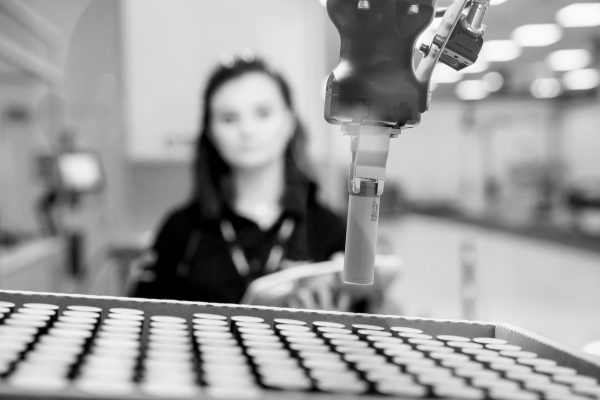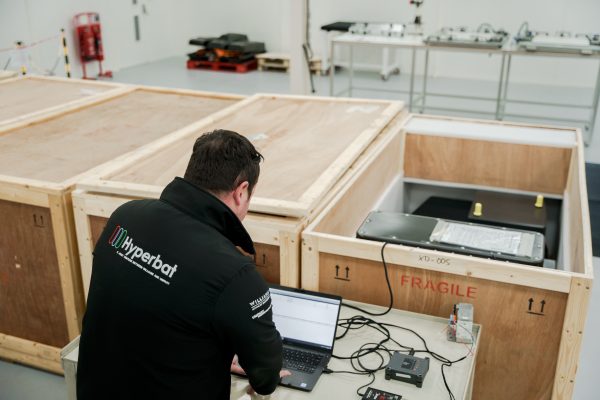 2 September 2020: With the UK experiencing rising sales of electric cars, Richard Hankinson (Unipart Logistics Automotive Director) heads along electric avenue to find how lithium-ion batteries are changing the landscape of EVs.
2 September 2020: With the UK experiencing rising sales of electric cars, Richard Hankinson (Unipart Logistics Automotive Director) heads along electric avenue to find how lithium-ion batteries are changing the landscape of EVs.
Automotive companies around the world are investing billions into lithium-ion battery technology with the number of EV cars on roads steadily increasing every day.
There are currently more than 128,000 pure-electric cars registered in the UK, with that number rising past 315,000 when including plug-in models such as hybrids. The National Grid suggests the UK stock of EVs could rise as high as 36 million by 2040.
The global COVID-19 pandemic has brought about significant disruption to every industry in the world and automotive is no different. However, during the first five months of 2020, registrations in the UK of pure-EVs increased by 60% compared to the same period in 2019.
In perspective, both the petrol and diesel markets declined by more than 90% during these months due to the Coronavirus crisis.
Moving in the right direction
When the AA polled more than 10,000 drivers for their views on electric cars in 2018:
- 85% said there aren’t enough public charging points for EVs
- 76% said EVs could not go far enough on a single charge
- 76% think EVs are too expensive
- 67% think EVs take too long to charge.
Since this survey was taken, progress continues to be made in each area; there are now more public charging locations (albeit not all are universal) than petrol stations in the UK, and new models increasingly have a range of more than 200 miles and rapid-charge capability.
With the costs of EVs gradually reducing, it is a matter of when, not if, EVs will become the mainstream.
Second life batteries will increase sustainability
With the focus of OEMs having been on the production of new lithium-ion batteries, there are question marks over the sustainability and capability of the battery aftermarket and the reverse supply chain.
When manufactured, batteries have typically not been created with a ‘second life’ in mind, and like the battery in your mobile phone, over time this technology loses capacity to a point where it’s no longer fit for purpose in a road vehicle.
This threshold is widely considered to be 75%, at this point a new use or disposition route for the battery would be necessary.
The ‘second life’ poses challenges to OEMs, who need to find ways of maximising value recovery for both in-warranty and out-of-warranty batteries, and drive customer satisfaction when a battery fails.
They must do all this while also improving inventory forecasting, despite performance profiles remaining unclear.
The three ‘R’s’ – refurbishment, recycling and repurpose – are all potentially valuable routes for used batteries. This in turn will also help to develop the circular economy in this area, which is environmentally necessary.
Moreover, the cost of cobalt, nickel and lithium will remain high in the years to come, so how OEMs recycle, refurbish and reuse batteries becomes increasingly essential.
Battery stockpiles will inevitably continue to grow for both aftermarket and reverse supply chain purposes, which brings with it increased risks due to the volatility of batteries in certain conditions.
A damaged battery, short circuit or fault could lead to a thermal runaway event, making them highly dangerous.
Supply chain solutions to thermal runaways
The complexity and variance of lithium-ion chemistry, coupled with the lack of information in the ability to identify and contain the different gases released, is a cause for significant concern.
By monitoring indicators such as temperature, gas and electrical activity, a potential thermal runaway event can be anticipated, creating the ability to intervene before the explosions start, saving the batteries, the immediate surroundings and quite possibly people’s lives.
The need for a practical supply chain solution to tackle these challenges is essential to ensure safety and value returns, and for the industry to recognise the full environmental benefits of EVs.
 Unipart, Hyperbat & Project Detain
Unipart, Hyperbat & Project Detain
Unipart has played an integral role in the world’s automotive supply chain for decades, working alongside top brands as the industry has evolved. As a result, Unipart has built up a world-class expertise in automotive manufacturing and logistics.
Today, that mixture of manufacturing and logistics positions Unipart uniquely in the EV market.
In 2018, Unipart announced a joint venture with Williams Advanced Engineering called Hyperbat, designing and manufacturing high-performance EV batteries in Coventry; while Unipart Logistics has a range of in-production and aftermarket customers across the globe.
Furthermore, Unipart has led Project Detain (‘Detection’ and ‘Containment’ of thermal runaway) alongside Instrumentel, who specialise in advanced condition based sensors.
Detain is a feasibility study supported by Innovate UK, investigating a concept for large scale smart, safe storage for EV batteries – the demand for which is expected to grow considerably.
Unipart Logistics already works with several OEMs, in both the automotive and energy sectors, for the storage of batteries and fulfilling the aftermarket supply chain.
By maximising efficiencies and productivity of large-scale engineering workforces, Unipart Group is in a position to offer complete EV strategic, tactical and operational support to both utilities and automotive customers alike.
Through continuing to develop safe, reliable and flexible reverse supply chain end-to-end solutions with added value for all OEMs, Unipart’s customers today hold a 47% market share of all UK registered EVs.
Reprinted from The Manufacturer magazine. Read the original article here.